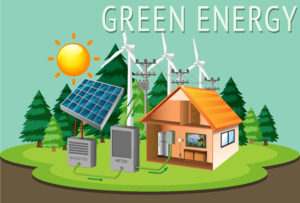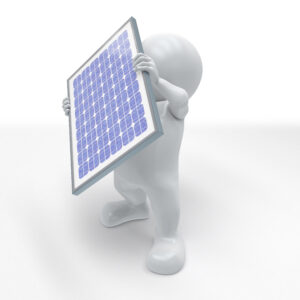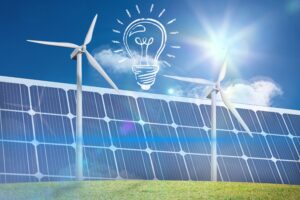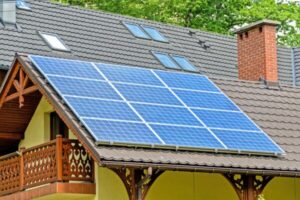The Future of Solar

As a homeowner, I’ve watched with interest as
Trust the best! Explore top-rated solar panels recommended by experts.
solar energy has evolved from an on-the-edge concept into a significant player in residential power. Central to this shift are solar panels, the heart of a home’s electrical system that harness the sun’s energy and offer the potential for significant cost savings over time. We will dive into this Solar Energy Review to actually see the multitude of Positives to Solar and what Panels can offer us.
The basics are straightforward. A typical home solar setup involves an initial investment insolar panels, a charge controller, batteries, and a power inverter. Also, the essential mounts and wiring that connect everything. While the promise is energy at virtually no cost, those initial purchases can be significant.
I’ve spoken to fellow homeowners who’ve gone solar, and their experiences help paint a very real picture. After the initial setup costs, the ongoing expenses drop off steeply. In many cases, the electricity bill can drop to nearly zero, particularly in sunny regions. Of course, solar panels aren’t entirely maintenance-free, but they’re generally seen as a reliable investment that pays off.
Not only do the savings speak for themselves, but the environmental arguments are powerful, too. By harnessing the sun, solar panels produce clean, renewable energy, which means a reduction in greenhouse gas emissions and a smaller carbon footprint or Environmental Impact for the household that adopts them.
When considering the full scope of what solar power brings to the table, it’s clear that the current state for homeowners is promising. Not just for the pocketbook, but for the planet as well.
Future Perspectives on Solar Energy for Residential Use

As we consider the road ahead for solar energy in residential settings, I see a very promising future. The cost of solar technology is expected to continue its downward trend as advancements in manufacturing and efficiency gain momentum. Innovative solar panels are at the peak of transforming how we harness the sun’s energy, thanks to persistent research and development efforts.
The manufacturing of newer, more efficient solar panels indicates the potential for a more self-reliant and sustainable future for homeowners. Research suggests a steady decrease in costs, driven by improved production techniques and increased market competition.
Predictions about the common adoption of solar panels are not just wishful thinking. The trajectory shows a positive lean towards solar becoming a mainstream power source. With continued governmental support in the form of rebates and incentives, along with growing social consciousness about renewable energy, adoption rates are assured to climb.
Could Solar Panels replace the traditional electric grid? It’s a question that sparks much debate. In the pursuit of a greener future, solar energy’s role as a major player is undeniable. While a total grid replacement might not be imminent, the enhancement of grid structure with distributed solar installations can be expected to rise significantly.
Finally, homeowners need to stay informed and engaged with the shifting energy landscape. As technologies evolve and new policies emerge, the potential for solar to redefine our energy infrastructure grows. The key takeaway is that solar energy stands not just as an alternative, but increasingly as the preferred choice for many homeowners looking forward to a bright and sustainable future.
A Review and Thoughts from My Research
The cost of Solar Power has dropped significantly 10 to 15 % per year.
Expected to increase 30 % by 2018.

Wind & Solar together like in this picture can help each other when one or the other is lacking. Solar panels are a major function of an electrical system that can power your home at no cost. Purchasing the Panels, charge controller, batteries, and power inverter are the only costs besides the mounts and wiring.
Some Techy Jargon for Solar & Wind
I like solar panels on my home so that I can eventually go off the grid of depending on the electric company’s for my electric power needs. A typical kit you can purchase from Harbor freight for 125.00 with a coupon is basically for a sunny area of the country. This is due to it’s low amp charge controller that allows a small portion of energy to the battery. Also the solar panels themselves are only 15 watts a panel. You do get three of them equaling a total amount of 45 watts. But this is weak compared to the solar panels you can get with say a 340 watt panel.
My advice would be to purchase a kit from harbor freight to experiment with especially if you are in a sunny climate. Then go on to more powerful systems. I personally have a harbor freight kit and the first thing I notice is it has trouble powering the battery due to my overcast climate in Ohio. SO, I am first advised to get a much more powerful charge controller between 60 amps and 100 amps. I prefer to get the larger 100 amp so I can grow with higher amp panels.
Two Types of Charge Controllers

Solar Panels for Homes and their Pros and Cons of the Pieces & Parts are discussed below. There are two kinds of charge controllers. One is a PWM (Pulse Width Modulation) and the other is an MPPT (Maximum Power Point Tracking). The MPPT is the one I will choose due to its advanced features and it will save the excess electricity by not wasting the excess. Also, OPtimizes the Voltage between the Panels and Batteries.
MPPT Pros:
- Higher Efficiency up to 33% more especially in colder weather.
- Allows for Higher Voltage
- Better Performance in Shady areas
Cons:
- More Expensive
- More Complex – Maybe more part issues
- Larger and Heavier
PWM Pros:
- Less Expensive
- Durability – Simple Design less Part Issues
- Lighter
- Runs SImple Devices Lights, Fans, Power Tools etc.
Cons:
- Less Efficient causing possible power losses
- Choppier more stepped Wave form can cause issues with Sensitive Electronics.
- Voltages less of a Matchup – Requires Battery and Solar Panel Voltage to be Closer
- Can cause buzzing or humming noises in Audio Equipment.
In smaller, less expensive setups the PWM is Great, while with Larger, more Powerful systems, the MPPT is a Worthwhile Investment.
Some panels can even collect a little energy from very little sun through the clouds IF it is a much higher amperage one. I would also be careful of buying more batteries at first due to the limitations to charging more than one or two. Although, a bigger battery bank will hold more Energy longer for those long cloudy days. Battery purchase is last in purchasing. I would focus on the charge controller first. Personally, I would get the highest one I could afford and get an MPPT one.
Power Inverters

Power Inverters converts DC current from the Sun to AC Household Current for Appliances. it also handles the surges of wattage the appliance draws or needs. A refrigerator or Hose gas heater will have a huge surge the first few seconds it turns on. If the appliance pulls more than the inverter can handle them it will not allow the appliance to run. That is why the Appropriate Power in the Power Inverter has to be looked at and get a good guesstimate of it’s power You’ll need. Many Power variations to them.
There are Two types of Power Inverters. The Best one is the Pure Sine Wave one. The other for smaller electrical appliances like lights is the Modified Sine Wave(not for devices like computers). I chose the Sine Wave one for my House. It has cleaner power and is good for almost everything.
Sine Wave Power Inverter – Preferable
Pros
- Cleaner Power Output. Smooth waveform similar to the AC for our Appliances.
- Safe for Sensitive things like computers, medical equipment, and Audio/Video stuff.
- Devices run efficiently with less Overheating.
- Motors run Quieter and Smooth.
- Wider range of Equipment and Devices can be used.
- Reduces Risk of Damage to High-Tech Equipment.
Cons
- More Expensive
- Larger and Heavier
Modified Sine wave
Pros
- Cheaper
- Simpler Design
- Lighter
- Runs Lights, Fans, Power Tools
Cons
- Choppier more Stepped Wave Form of Electric – Issues with Sensitive Electronics
- May cause overheating and shorter lifespans for Electronics
- Can cause Buzzing or Humming in Audio Electronics
- Might lead to Power Losses and Increased Energy Consumption

Solar Panel and Wind Turbine
Wind Technology
In future efforts, I would like to help the solar system I’m running with Wind Power. I see it as when the batteries are draining on cloudy days, then the wind can take over and ‘help’ the solar panels when they are not getting enough sun. Also, if it is windy and sunny out the batteries will be fully charged. But the main idea is when one is down say a cloudy day then the wind turbine will be charging the batteries in the absence of the sun and vice versa.
The Solar Panel System I Envision.
I am thinking of a large battery bank of say 10 to 20 batteries. More batteries can cover more appliances for a longer period of time. The Solar Panels would need to be a higher wattage say 400 – 500 watts a piece. Also many of them. There is a mathematical formula to calculate the ratio.
Power Entire House
Given enough batteries wired in series for higher voltage AND wired in parallel for longer-lasting amp hours, you could power an entire house. Not to forget to power these many batteries you will need many solar panels at a higher wattage say 400-500 watts each. Newer, cheaper breakthrough materials are being invented as we speak to absorb like a sponge from the Sun !! Purchase a Higher Amp Power Inverter to carry the load. Obtain a ‘good one’ meaning ‘Sine Wave’ not modified sine wave.
As an Amazon Associate, I earn from qualifying purchases
Trust the best! Explore top-rated solar panels recommended by experts.

